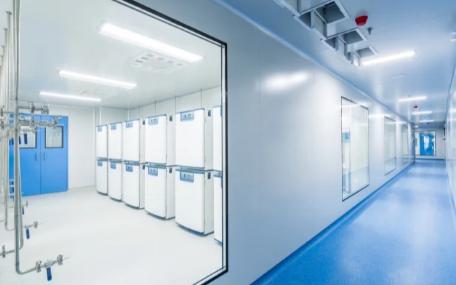Understanding the key steps in a preclinical pharmacokinetics (PK) study is essential for drug development. These studies help predict how a drug behaves in the body, focusing on absorption, distribution, metabolism, and excretion (ADME). By investigating these processes, researchers optimize compounds before clinical trials. Key steps include in vitro ADME screening, in vivo pk study design, bioanalytical measurement, data analysis, and modeling. This guide outlines each step clearly, providing a structured path to follow. With this knowledge, scientists make informed decisions that lead to successful drug development, ensuring safety and efficacy before human trials.

Overview of In Vitro ADME Screening
In Vitro ADME Components
In vitro ADME screening consists of several important components that inform drug development. Absorption studies assess a compound’s ability to cross cell membranes, typically using Caco-2 cell lines. These cells mimic the intestinal barrier and provide valuable data on bioavailability. Distribution studies examine how the drug spreads within the body and binds to plasma proteins. Such insights inform dosage decisions and potential interactions. Metabolism tests, conducted with liver microsomes or hepatocytes, reveal pathways the drug may use, identifying primary metabolites and potential toxicities. Finally, excretion processes evaluate how efficiently a drug is removed from systems, often through renal or biliary assays. Together, these studies reveal essential pharmacokinetic properties that can affect drug performance. Researchers integrate results from each component, creating a comprehensive pharmacokinetic profile. This profile determines whether a compound has favorable characteristics to advance in development, ensuring resources focus on the most promising drug candidates.
Linking In Vitro to In Vivo
Successfully linking in vitro findings to in vivo transitions is pivotal for a drug’s journey through development. Researchers ensure that in vitro results accurately predict in vivo behavior by selecting appropriate models and applying scaling techniques. This step helps bridge the gap between lab-based assays and animal studies, guiding dosage selection and timing. By refining parameters, such as hepatic clearance and volume of distribution, scientists create a cohesive pharmacokinetic profile. These profiles serve as the foundation for designing effective in vivo studies. Comparing in vitro and in vivo data allows for adjustments and refinements that enhance prediction accuracy. As a result, this linkage facilitates a smoother transition, minimizing unexpected outcomes during animal trials. Researchers can then focus on optimizing study designs and reducing attrition rates, paving the way for successful clinical evaluations. Establishing this connection proves essential for developing safe and effective therapeutics while conserving resources.
Designing the In Vivo PK Study
Choosing Animal Models & Dosing
The choice of animal models and dosing strategies plays a crucial role in the success of in vivo PK studies. Selecting the appropriate animal model requires evaluating several factors, including metabolic pathways, physiological similarities to humans, and size. Rodents, such as rats and mice, are popular due to their manageable size and cost-effectiveness. However, larger animals might be necessary for more accurate metabolic data extrapolation. Dosing strategies involve defining the therapeutic range based on in vitro predictions. Researchers must ensure that doses reflect possible human therapeutic levels while maintaining safety margins to prevent adverse effects. Multiple dosing regimens may be employed to understand differences in absorption, bioavailability, and toxicity. Optimizing these variables allows for a comprehensive understanding of the drug’s pharmacokinetic behavior. Careful consideration of these elements yields robust data that is critical for developing dosing guidelines for subsequent clinical trials.
Sample Collection Strategy
A well-structured sample collection strategy is paramount in in vivo PK studies to ensure accurate and reliable data. Researchers determine key sampling points based on drug absorption, distribution, metabolism, and excretion rates. Initial sampling frequently occurs shortly after administration to capture peak plasma concentrations. Subsequent samples are scheduled over multiple time points to map the drug’s kinetic profile comprehensively. Researchers choose collection methods, such as blood sampling, to match the animal model used and minimize stress or variability. Adjusting sample sizes enhances data quality and identification of key pharmacokinetic parameters like Cmax (maximum concentration) and t1/2 (half-life). Proper storage and handling of samples prevent degradation, ensuring measurement integrity and reproducibility. A strategic sample collection plan aligns with study objectives, providing detailed insights into drug disposition across different species. These insights guide further refinements for human dosage projections, contributing toward a successful transition into clinical phases.

Bioanalytical Measurement & Data Analysis
Measuring Drug Levels
Accurate measurement of drug levels in biological samples is a cornerstone of pharmacokinetic studies. Researchers utilize precise bioanalytical methods, such as liquid chromatography-mass spectrometry (LC-MS), to determine drug concentrations in plasma or serum. These techniques offer high sensitivity and specificity, crucial for detecting low-concentration compounds and ensuring reliable results. Sample preparation, involving protein precipitation or solid-phase extraction, precedes analysis, optimizing detection conditions. Standard curves and quality control samples guide calibration, verifying measurement accuracy and reproducibility across different study batches. Researchers schedule sampling at strategic time points to capture fluctuations and peak concentrations, further supporting the development of a comprehensive pharmacokinetic profile. Drug quantification data informs parameter calculations, helping develop effective and safe dosage regimens for future clinical phases. This meticulous approach delivers a robust data foundation, facilitating informed decisions as drug candidates progress through the developmental pipeline.
PK Parameter Calculation
After measuring drug levels, calculating pharmacokinetic (PK) parameters offers critical insights into drug dynamics. Key parameters include clearance (CL), volume of distribution (Vd), half-life (t1/2), and area under the concentration-time curve (AUC). These calculations help determine how quickly a drug is eliminated and how extensively it spreads within the body. Researchers employ non-compartmental analysis, a common method that uses summary statistics rather than assuming specific compartment structures. Understanding these parameters guides dose adjustments and design of the dosing regimen to achieve optimal therapeutic concentrations in patients. Calculating parameters like bioavailability and bioequivalence allow comparison across different formulations or dosing routes. By assessing these PK metrics, researchers predict a drug’s behavior in humans, enabling the refinement of study designs. Accurate calculations form the groundwork for translating preclinical findings into safe and effective clinical applications, ensuring therapeutic success.
Modeling and Translating to Humans
Compartmental & PBPK Modeling
Compartmental and physiologically-based pharmacokinetic (PBPK) models play a significant role in drug development by simulating drug behavior in the human body. Compartmental models simplify the body into discrete sections, using mathematical equations to predict drug movement between compartments. These models, guided by preclinical data, assist in understanding pharmacokinetic properties like clearance and volume of distribution. On the other hand, PBPK models provide a more detailed physiological representation, incorporating organ-specific parameters and mechanistic insights gathered from preclinical studies. PBPK models enable researchers to evaluate inter-individual variability, considering factors such as age, gender, and disease states. Both approaches offer complementary perspectives, supporting precise dose-selection decisions for first-in-human trials. Coupled with in vitro-in vivo data, these models bridge the gap between preclinical findings and clinical applications, ensuring reliable predictions of drug behavior. By leveraging these modeling techniques, researchers refine their approach to drug development, enhancing the success rate of clinical investigations.
Dose Projection to Clinical Studies
Dose projection is a crucial step in transitioning from preclinical findings to clinical trials. Researchers employ mathematical models, synthesizing data from preclinical experiments and simulations, to estimate human dosages with precision. Integration of in vitro-in vivo correlations (IVIVC) and physiologically-based pharmacokinetic (PBPK) models facilitates this process by adjusting for physiological and metabolic differences across species. Scaling techniques, such as allometric scaling, accommodate variations in body size and function, predicting human pharmacokinetics effectively. These projections inform first-in-human studies, where initial safety and efficacy must be established. Accurate dose projections minimize risks of adverse reactions and ensure therapeutic potential, optimizing clinical trial design and enhancing patient safety. This methodical approach allows researchers to maximize drug efficacy, refine therapeutic windows, and streamline the transition from research to clinical application, thereby paving the way for successful drug development and introduction to the market.
Conclusion
The comprehensive examination of key steps in preclinical PK studies outlines a clear roadmap for successful drug development. From in vitro ADME screening to in vivo studies, bioanalytical measurement, and data-driven modeling, each stage plays a pivotal role in understanding drug behavior. By carefully designing studies and applying cutting-edge techniques, researchers minimize risks and enhance therapeutic potential before advancing to human trials. Accurate dose projections, informed by rigorous data analysis and modeling, ensure a smooth transition into clinical phases. This structured approach not only optimizes resources but also accelerates the delivery of safe and effective treatments to the market. Embracing this holistic perspective facilitates the translation of promising compounds into viable therapeutics, ultimately benefiting patient health and well-being. With these key steps, researchers and developers streamline the drug development process, maximizing success while maintaining safety and efficacy as central priorities.











